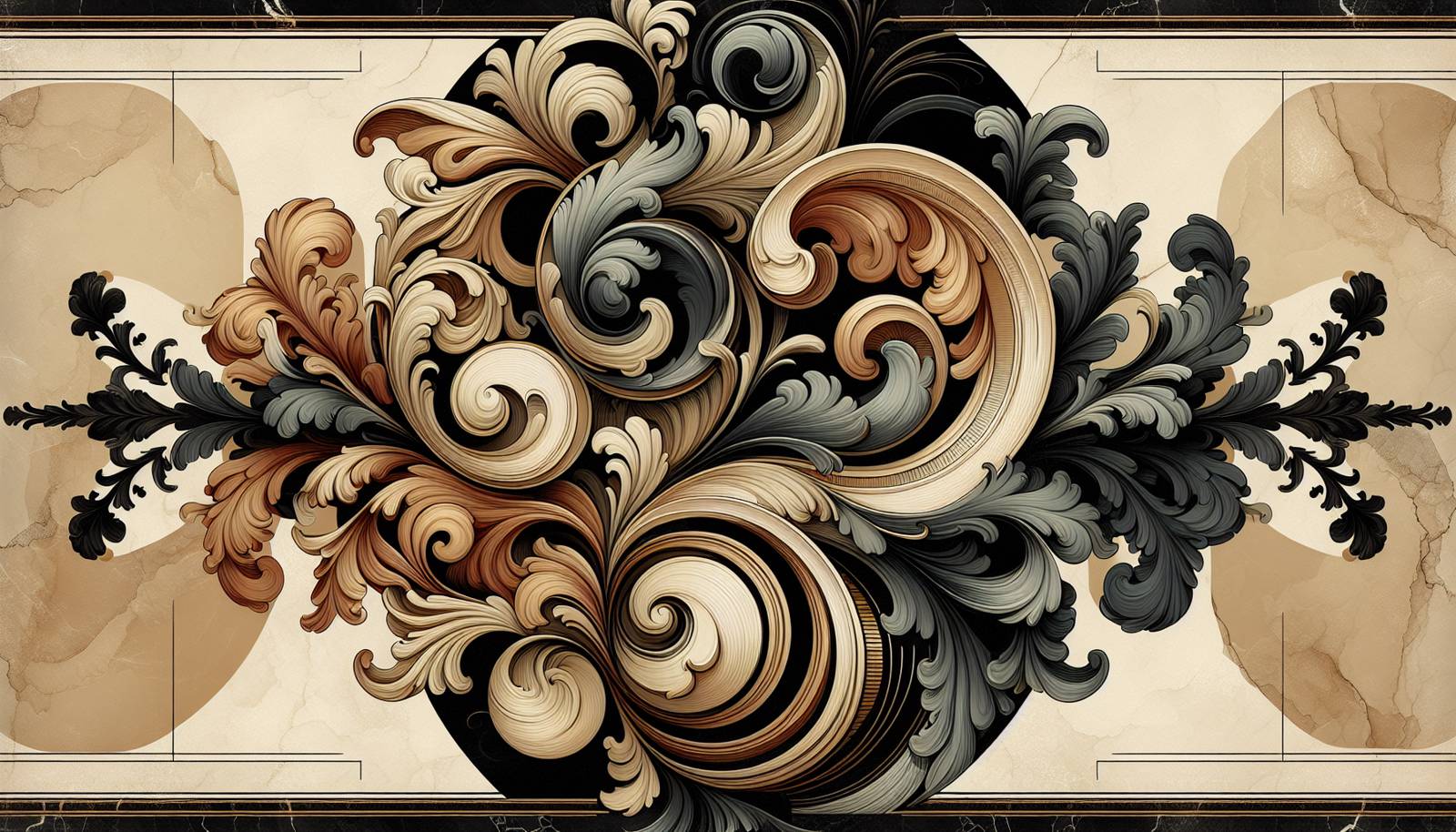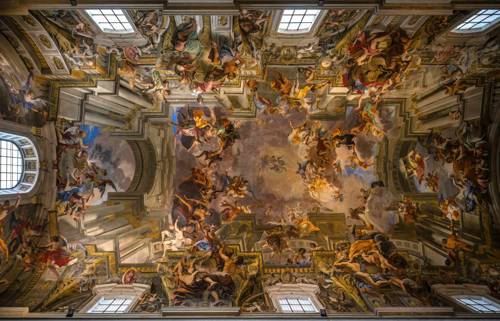
FAQ About The Impact of Baroque Art on Visual Storytelling

What is Baroque art?
Baroque art is a style of European art from the late 16th century to the early 18th century. It is characterized by exaggerated motion, clear detail, and easily interpreted grandeur and sensuality. Baroque art often involves dramatic contrasts between light and dark and aims to inspire emotional responses in viewers. Prominent Baroque artists include Caravaggio, Rembrandt, and Bernini.

How does Baroque art influence modern visual storytelling?
Baroque art influences modern visual storytelling by contributing techniques such as dramatic contrasts, emotional depth, and dynamic compositions. These elements help create strong emotions and convey complex narratives, often seen in films, theater, and other visual media.

What are some characteristics of Baroque art that are used in modern media?
Characteristics of Baroque art used in modern media include chiaroscuro (the use of strong contrasts between light and dark), theatricality, dynamic movement, and emotional intensity. These techniques help in creating a visually compelling narrative and evoking a powerful emotional response from audiences.

Can you give examples of modern films influenced by Baroque art?
Several modern films show the influence of Baroque art, particularly in their use of lighting and drama. Films like 'The Godfather' and works by directors such as Guillermo del Toro and Tim Burton often use dramatic contrasts and a heightened emotional style reminiscent of Baroque art.

What is chiaroscuro and how is it used today?
Chiaroscuro is an artistic technique employed to use strong contrasts between light and dark to give the illusion of volume in modeling three-dimensional objects and forms. Today, it is widely used in cinematography and photography to create mood, highlight subject areas, and contribute to the narrative.

Who are some key Baroque artists whose work influences today’s media?
Key Baroque artists include Caravaggio, whose use of chiaroscuro has influenced lighting techniques; Rembrandt, known for his detailed portrayals of human emotion; and Gian Lorenzo Bernini, whose dynamic sculptures embody the movement and drama that have inspired film and theater.

How does Baroque art enhance emotional depth in storytelling?
Baroque art enhances emotional depth in storytelling through its dramatic presentation and focus on human emotion. The use of dynamic poses, intense facial expressions, and emotional narratives helps to engage audiences at a visceral level, fostering empathy and deeper understanding.

What is the historical context of Baroque art?
Baroque art emerged in Europe during the late 16th century as part of the response to the Catholic Church's Counter-Reformation, which sought to reassert religious themes and convey them with emotional appeal. It coincided with advancements in science and exploration, reflecting both religious fervor and an interest in the natural world.

Are Baroque art techniques still taught in art schools today?
Yes, Baroque art techniques, particularly those like chiaroscuro and dynamic composition, are still taught in art schools today. They are considered foundational techniques that inform various styles and approaches in both traditional and modern art forms.

How do Baroque techniques contribute to the visual aesthetics of theater productions?
Baroque techniques contribute to theater productions by enhancing dramatic effects and creating a sense of grandeur. Techniques such as exaggerated lighting, elaborate costumes, and expressive gestures help in emphasizing the emotional core of the narrative and engrossing the audience.

What role did religion play in the development of Baroque art?
Religion played a significant role in the development of Baroque art, as it was closely linked to the Catholic Church's efforts during the Counter-Reformation. The Church commissioned artworks that were emotionally engaging and spiritually uplifting to convey religious messages more effectively and counteract Protestantism.

Can Baroque art principles be applied to digital media?
Yes, Baroque art principles can be effectively applied to digital media. Techniques like chiaroscuro and dramatic storytelling are used in digital illustrations, video games, and digital animations to create visually stunning and emotionally engaging content.

In what ways did Baroque art use motion to enhance storytelling?
Baroque art uses motion by depicting scenes with dynamic compositions, such as swirling drapery, flowing hair, and sculptural spirals. This creates a sense of movement and progress in the narrative, drawing the viewer into the action and heightening the storytelling's emotional impact.

What is the impact of Baroque architecture on modern visual storytelling?
Baroque architecture, with its ornate details, dramatic grandeur, and emphasis on light and shadow, influences modern visual storytelling by providing inspiration for set designs, especially in epic dramas and historical narratives. Filmmakers often use Baroque elements to evoke themes of power and emotion.

How did Baroque art influence the development of perspective in visual storytelling?
Baroque art significantly advanced the use of perspective by creating compositions that guide the viewer's eye through the painting. Artists employed architectural elements and spatial depth to draw viewers into the scene, techniques that are now fundamental in film and photography for creating immersive experiences.

Did Baroque art become more widespread outside Europe?
Yes, Baroque art styles spread beyond Europe during the colonial period, influencing art in the Americas and parts of Asia. Adaptations of the Baroque style can be seen in architecture and painting in these regions, often blended with local traditions to create unique visual forms.

How do Baroque elements compare to those of earlier Renaissance art?
While Renaissance art emphasized harmony, balanced composition, and idealized forms, Baroque art shifted towards drama, movement, and emotional expression. Baroque art used light and shadow more intensely and focused on creating a sense of immediacy and involvement for the viewer.

What is the significance of contrast in Baroque art and storytelling?
Contrast in Baroque art, particularly between light and shadow, is significant for creating mood and focus within the artwork, drawing attention to specific elements, and reinforcing the thematic intensity. This principle of using contrast is vital in storytelling to highlight conflicts, themes, and character dynamics.

How did Caravaggio's work epitomize Baroque techniques, and how is it used today?
Caravaggio epitomized Baroque techniques with his use of chiaroscuro to create dramatic tension and focus on realism and human emotion. His work heavily influences modern cinematography and photography, where lighting is used to direct viewer attention and evoke powerful emotional responses.

Why is Baroque art considered a pivotal influence in the evolution of art and storytelling?
Baroque art is considered pivotal because it transformed artistic expression by intensifying emotional depth and dramatically engaging the viewer. Its techniques have permeated various media, leading to new ways of visual storytelling that continue to resonate in contemporary art and entertainment.
